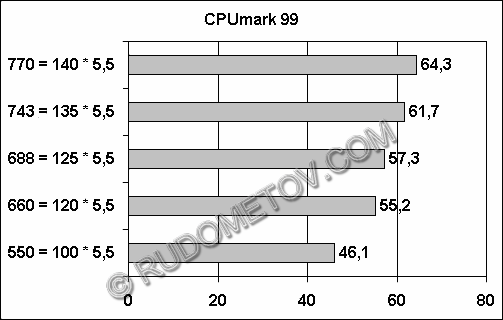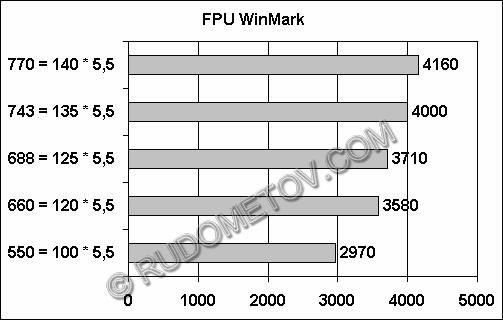Rise of productivity of computers through dispersal of units
(Continuation)
Evgenie Rudometov, Victor Rudometov.
authors@rudometov.com
Heightened interest to a problem of dispersal from computer corporations speaks simply enough. Similar researches allow to improve processing techniques, to perfect architectures, to raise productivity of units and sites. Besides, it allows to store statistics of glitches and refusals that gives the chance to develop effective hardware-software resources of rise of dependability. Eventually, ability of computer units steadily to work in the forced modes - excellent advertising for production of corporations-manufacturers of the given units. And productivity rise is powerful argument in competitive struggle. Therefore it is clear to find tendency of quite respectable corporations various ways of struggle for megacycles and accordingly for productivity.
And critics can result the following argument - installation of resources of cooling on videoadapters are that? Unless the modes which have demanded intensive resources of cooling, are not response to speeding up of units? And the new programs-drivers providing a choice of an optimum behaviour with raised frequencies for a video chip set and a video memory? Eventually, how to consider new processors Athlon in which have again raised a supply voltage of a kernel with 1,6 In to 1,7 In? However, corporations-manufacturers guarantee dependability of such units. Here it is really important! But here everyone is free itself to select and estimate consequences of the operations linked to installation of forced modes. One it is possible to tell, that for out-of-date units it any more will not damage (all the same to throw out), and for new, and corresponding, units reasonable dispersal, for example, 10-20 %, as a rule, is fraught only with possible glitches. As in modern hardware-software resources units of the control over a temperature mode are provided.
From experience of dispersal of processors of one type, but calculated for different internal frequencies, the following legitimacy is obviously tracked. After change of processing technique, the kernel architecture, etc. The first releases of processors, as a rule, well give in to dispersal. Possibly, it speaks the big technological store most strongly appearing for the first processors of new processing technique. It was observed and with Pentium processors, and Celeron, and from Pentium II. Really, it is enough to recollect Pentium with frequencies of 75-100 MHz, Celeron-300A, Pentium II with frequencies 266-300. Also there is an underplate, that Pentium III c kernel Coppermine, fulfilled on the newest 0,18 mkr processing techniques, will repeat success of the predecessors. And though there were the messages confirming this theory, represents certain interest to research the sample "from a box" on the technological store, allowing increase in frequency and, accordingly, productivity. As in case of success there was a real possibility to receive a supercomputer which high efficiency allowed to realise many tempting plans. Results of the fulfilled researches linked to the analysis of possibility of operation in the forced mode of the high-powered processor of Pentium III 550E with kernel Coppermine are more low presented.
Dispersal installation in BIOS Setup
Pattern of the system used in testing:
- The motherboard: Abit BE6-II.
- The processor: Intel of Pentium III 550E (kernel Coppermine, cache memory L2 - 256 Kbytes on frequency of the processor, in box, pack date 01/28/2000, version A13433-001, made in Malaysia).
- Hard disk: IBM DPTA-372050 (20 Gbytes, 2 Mb of the cache memory, UltraDMA/66).
- Dynamic storage: 128 Mb, PC100.
- The videoadapter: Asus AGP-V3800 TV (video chip set TNT2, a video memory-32 Mb).
- CD-ROM: ASUS CD-S400/A (40x).
- OS: Windows 98 with the installed drivers of the controller of hard disks UDMA/66.
- As the exerciser the package of tests WinBench 99 v1.1, namely CPUmark99 and FPU WinMark used.
Results of testing
|
Frequency FSB, MHz |
Frequency CPU, MHz |
CPUmark 99 |
FPU WinMark |
|
100 |
550 = 100 * 5,5 |
46,1 |
2970 |
|
120 |
660 = 120 * 5,5 |
55,2 |
3580 |
|
125 |
688 = 125 * 5,5 |
57,3 |
3710 |
|
135 |
743 = 135 * 5,5 |
61,7 |
4000 |
|
140 |
770 = 140 * 5,5 |
64,3 |
4160 |
Results of testing prove presence of the considerable technological store existing for processors of Intel of Pentium III which architecture is grounded on application of a new kernel - Coppermine and usage of the cache memory functioning on frequency of a kernel.


It is published in log "КомпьютерПрайс"
To pass to razrelu Processors
 English
English Russian
Russian German
German